
10 Famous Artist Couples in Art History
It’s often said that the greatest artists also have the greatest love affairs. In order to be so in touch with your creativity, you need to be deeply in touch with your emotions, passions and desires.
Art history is saturated with great love stories of artists who inspired each other, formed intensive partnerships in love and art, and shook each other and the world around them.
Celebrate Valentine’s Day with our roundup of 10 of the most famous artist couples throughout history.
Frida Kahlo and Diego Rivera
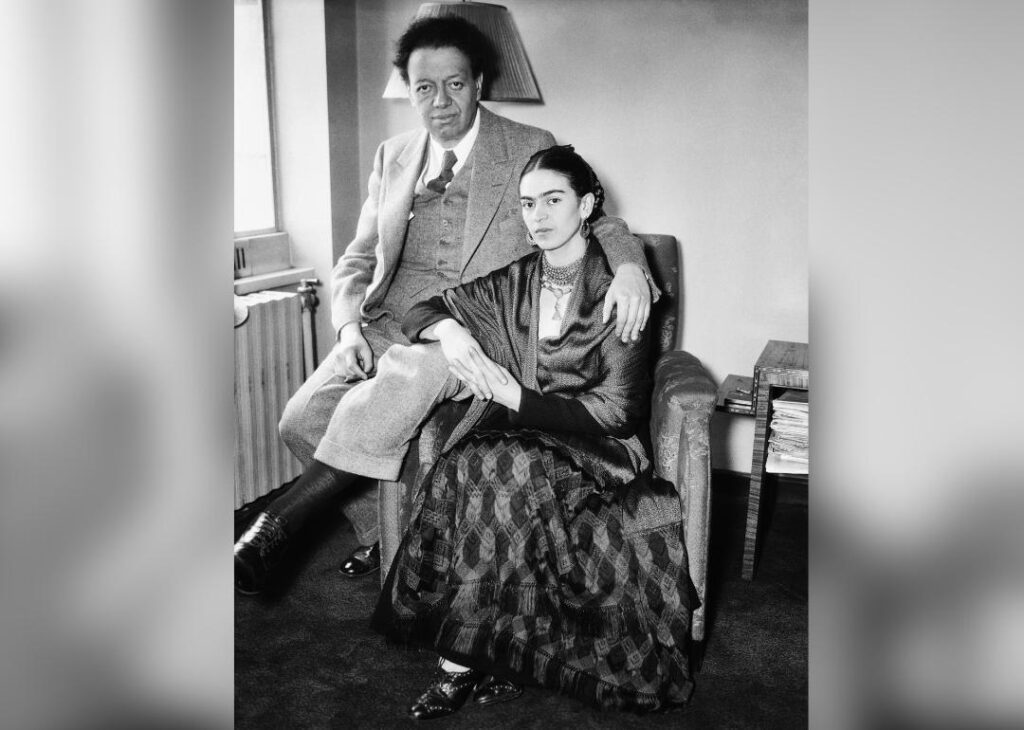
With a love story as colorful as their shared aesthetic, Diego Rivera and Frida Kahlo’s relationship began as a teacher-student romance. Drawn together by a common interest in communist politics, a love of painting, and an utmost respect for one another’s work, the pair married in 1929. Ten years later, they divorced after it was revealed that Rivera had an affair with Kahlo’s sister, Cristina.
True love never fails, though, and the dynamic duo rekindled their marriage one year later.
Theirs was a classic case of “I can’t live with you, but I can’t live without you.” The two inspired each others’ art tremendously and often show up in each other’s paintings.
A particularly telling painting regarding how important they were in each other’s creative processes is Kahlo’s painting Diego on my mind (Self-portrait as Tehuana), in which Rivera is depicted as Kahlo’s third eye, the very epicenter of her creativity.
Despite being lauded as Mexico’s greatest living artist, Rivera always viewed his wife as more talented than himself. Their relationship lasted until Kahlo died in 1954, an event that her partner described as the most tragic moment of his life.
Alfred Stieglitz and Georgia O’Keeffe
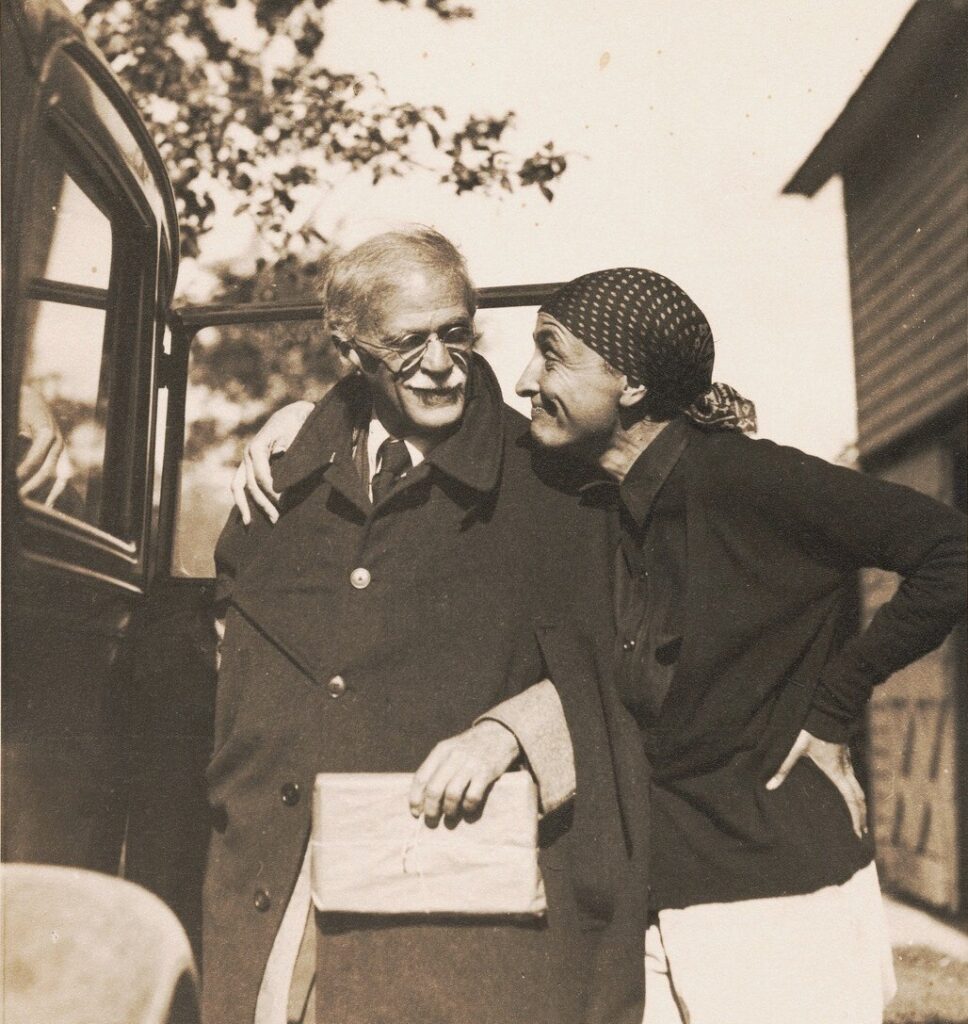
Alfred Stieglitz met Georgia O’Keeffe at a time when he was already at the top of his game.
Twenty years her senior, the photographer and gallerist was more than just a partner for the younger artist — he also served as her mentor. He was the first to exhibit her abstract drawings and helped nurture her into the respected painter she would grow to become.
O’Keeffe’s talents eventually led her to New Mexico, and the couple’s relationship consisted of little more than love letters sent back and forth until his death.
The ultimate testament to the power of long-distance relationships, each of the 20,000 letters have since been collected for the book My Faraway One: Selected Letters of Georgia O’Keefe and Alfred Stieglitz.
Maybe it’s just us, but Noah’s 365 letters to Allie in The Notebook suddenly seem a lot less romantic.
Man Ray and Lee Miller
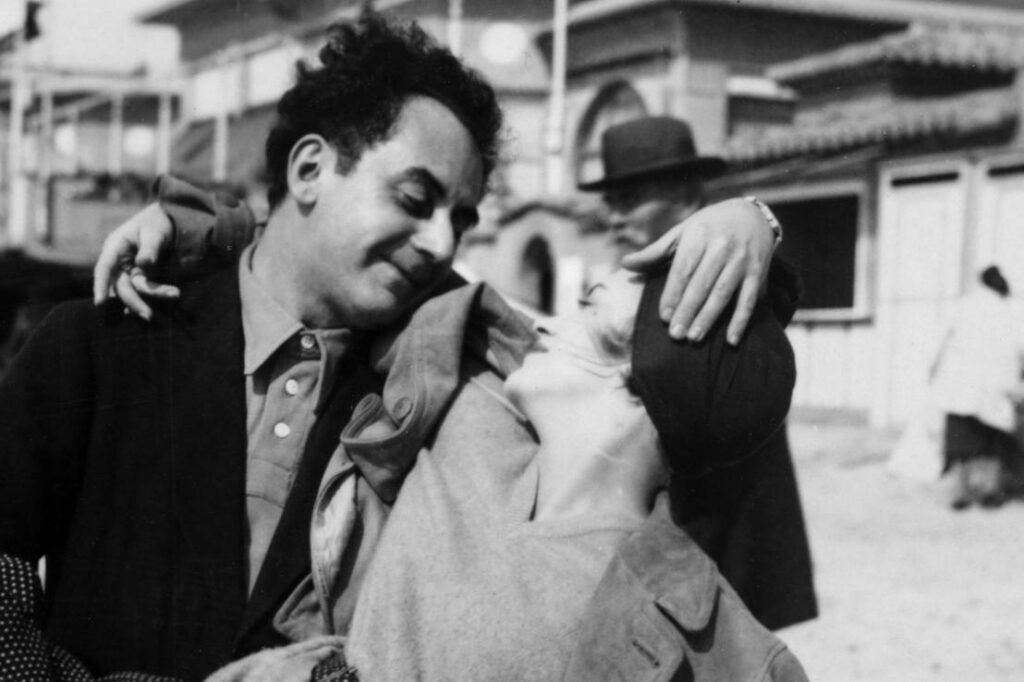
Although Man Ray insisted that he didn’t take student apprentices, the successful model Lee Miller relocated to Paris for a chance to work with the iconic artist.
She became his photographic assistant, his muse, and, later, his lover. The romance was short and sweet, but the two-year relationship was a productive one. Before finding herself as a photographer and becoming an active member of the Surrealist movement, Miller discovered the solarisation technique Man Ray would later trademark.
She is also credited for many of the artist’s photographs taken between 1929 and 1932, as she stepped in while he worked on his paintings.
Marina Abramović and Ulay

Passionate, pioneering and powerful are the three most apt words to sum up the work of Ulay and Marina Abramovic.
Proof that they were destined for romance? The couple even shares the same birthday.
Referring to one another as “the other” and “parts of a two-headed body,” their synchronized creativity resulted in over a decade of collaborations that explored themes of ego and artistic identity.
Not all love lasts forever, though; the two parted ways with one last collaboration. Entitled The Great Wall Walk, this final partnership saw Abramovic and Ulay separated by China’s Great Wall, where they met in the middle for one last goodbye.
Pablo Picasso and Françoise Gilot
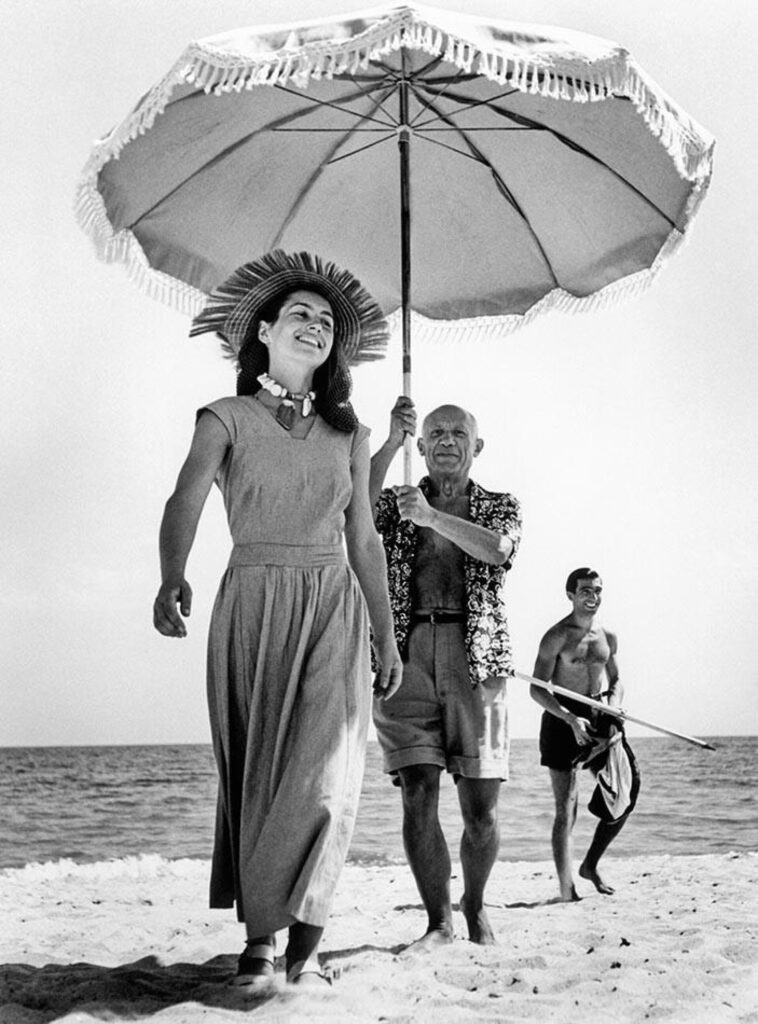
Pablo Picasso’s fascination with the female form spawned from a long line of women he called his muses.
Possibly his most iconic muse was his long-term partner, Françoise Gilot, whom he wooed with a bowl of cherries when he spotted her across the restaurant where they were dining.
At the tender age of 21, Gilot was already producing well-respected paintings of her own, although she was still a student then.
While technically married to another, Picasso carried on a turbulent ten-year affair with Gilot, fathering her two children.
The relationship was a nasty one, but the couple inspired each other artistically: Gilot acted as Picasso’s muse for the decade, and Picasso’s work influenced Gilot’s take on Cubism.
Dorothea Tanning and Max Ernst
Following a relationship with art patron Peggy Guggenheim, Max Ernst went on to marry his fourth wife, Dorothea Tanning.
The couple — who famously fell in love over a game of chess — is credited as pioneering the Surrealist movement. Despite this successful accomplishment, Manning insisted that the two “Never, never talked art. Never.” Married in a double ceremony in Hollywood with Man Ray and Juliet Browner, the pair enjoyed surrounding themselves with other artists. Often, they would entertain the likes of Henri Cartier-Bresson in their home in France, seemingly thriving among fellow creatives.
Dipping between Surrealism, Dadaism and everything in between, the pair continued their separate artistic practices and maintained a healthy marriage until Ernst died in 1976.
Jasper Johns and Robert Rauschenberg
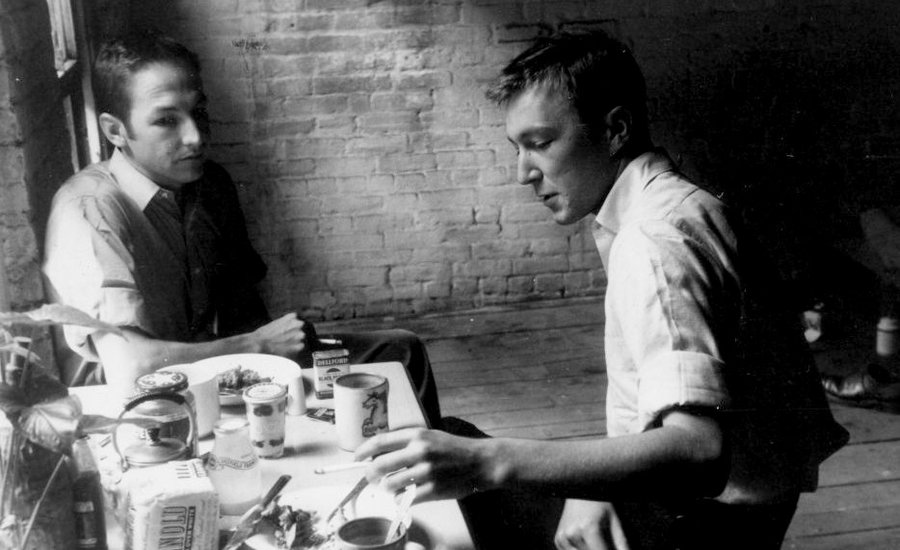
Recognized for developing the first American style to depart from Abstract Expressionism, Jasper Johns and Robert Rauschenberg came together as collaborators and lovers in the mid-’50s.
Though the two are widely considered as the founding fathers of the Pop Art movement, their relationship was ignored due to the rampant homophobia during this time. With many believing the two to be just friends, their intense partnership is often overlooked as being a pivotal factor in their art-making.
After a passionate six years, Johns and Rauschenberg broke up. The distraught revolutionaries both left New York City, changed their pictorial styles and cut off all contact with each other for over ten years.
Lee Krasner and Jackson Pollock

Lee Krasner and Jackson Pollock got married in 1945.
Krasner had already established herself as a prominent Abstract Expressionist in the ‘30s. She was very involved with the New York avant-garde art scene, and was the one to introduce Pollock to Clement Greenberg, the art critic who would go on to call Pollock the greatest painter the US had produced. Krasner and Pollock were among the first post-World War II artists to settle in the countryside in East Hampton, setting the future art colony in motion. Pollock was already struggling with alcoholism at that time, and Krasner thought it would do him good to get him away from the city.
In an interview with the New York Times, Krasner said of their artistic influence on each other: “Look, we shared the bedroom, but not the studio, and we maintained a strict by-invitation-only discipline about going into each other’s studios.” In her opinion, any impact they had on each other’s art was unconscious.
According to art historian Barbara Rose, they absolutely influenced each other considerably. She has stated that Pollock helped Krasner be free and spontaneous in her painting, whereas Krasner helped him be organized and refined.
Elaine and Willem de Kooning
Elaine and Willem de Kooning were Abstract Expressionist artists who met in New York in 1938.
Willem de Kooning was a Dutch artist who arrived in New York in 1926 as a stowaway on a ship. A friend introduced them, and it was love at first sight. She was outgoing, free-spirited and talented, a femme fatale. He was introverted and gloomy, obsessed with his work.
Willem gave Elaine strict, traditional drawing lessons, which she has said provided her with the skills that built her confidence as a portrait painter. Elaine, convinced that Willem was a genius, soon began to promote his career — even if it meant having affairs with prominent art critics such as Harold Rosenberg.
In 1957, the artists separated after too much drinking and too many affairs. In 1976, they got back together, and Elaine took it upon herself to manage Willem’s studio and help him quit drinking (she was sober already).
Though Willem de Kooning was the more famous one of the pair, Elaine had an equally impressive career that is finally getting the attention it deserves after years in the shadow of Willem de Kooning. Strikingly, Elaine was commissioned to do a portrait of President John F. Kennedy in 1962 because she represented the new frontier of painting, Abstract Expressionism, and was quick.
Auguste Rodin and Camille Claudel
In 1882, aged 42, Rodin met the 19-year-old sculptor Camille Claudel. Impressed by her precocity, he took her on as a studio assistant, entrusting her with complex tasks such as the hands and feet of his monumental figures — notably those in The Gates of Hell.
Alongside her studio work, Claudel sought recognition as an independent artist, accepting commissions and exhibiting busts and portraits at the Salon. “I showed her where she would find gold,” Rodin once said of Claudel’s talent, “but the gold she found is all hers.”
The two began a passionate and turbulent affair during which they influenced each other’s styles, with their works serving as declarations, criticisms or echoes of one another. Both enjoyed critical success, too: Claudel’s La valse and Rodin’s Eternel Printemps and Baiser are among the celebrated works that date from the peak of these years of passion and shared creation.
Claudel, however, met a tragic fate. They parted ways because Rodin refused to leave his long-time partner, Rose Beuret, and Claudel descended into madness. In 1913 she was committed to an asylum, remaining until she died in 1943.
“It is terrible to be so abandoned,” she wrote in 1915. “I can’t help but succumb to the grief that overwhelms me.” After her death, Claudel and her work slipped into relative obscurity, only emerging from her lover’s shadow in the late 20th century.
Combine Your Love of Fine Art With Passion for Investing
For the art lover that sees the value of celebrated artworks or the sophisticated investor that wants to add something a bit more beautiful to their portfolio, a more romantic investment is possible with Masterworks.
Through Masterworks, you can easily invest in modern and contemporary art valued at a few hundred thousand to tens of millions of dollars created by some of the world’s most celebrated artists.
How it Works
Here’s a quick rundown of the process:
- The team of researchers uses proprietary data to identify which artist markets may have momentum.
- The acquisition team then purchases the piece.
- Masterworks files an offering with the Securities and Exchange Commission (SEC) to securitize the art. This allows anyone to invest in shares of the art. You can then learn more about the artist’s market data and historical price appreciation to help pick an original artwork that appeals to you.
- Once you’ve invested, all that’s left to do is wait. Masterworks will generally hold a piece for 3 – 10 years. You receive a pro-rata share if the piece is sold at a profit.
- Alternatively, you can buy and sell your shares on the secondary market.
To get started, submit your membership application and schedule a quick call with a representative.
See important Reg A disclosures: Masterworks.com/cd